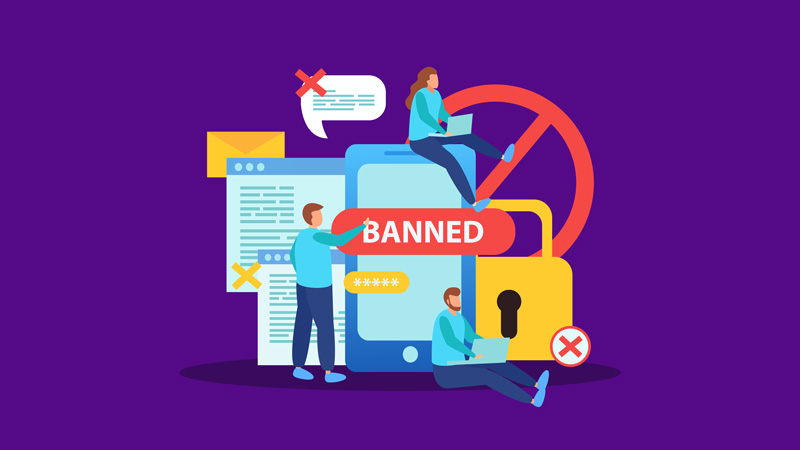Experiencing a sudden drop in your website traffic or search rankings can be alarming. One possible cause is a Google penalty, a manual or algorithmic action taken against sites that violate Google’s quality guidelines. These penalties can drastically reduce your site’s visibility on search engine results pages, but with the right recovery strategy, you can bounce back stronger.
In this guide, we’ll walk you through how to identify, fix, and recover from a Google penalty step-by-step.
What Is a Google Penalty?
A Google penalty occurs when your site no longer complies with Google’s Webmaster Guidelines. It can be applied manually by Google’s spam team or automatically through algorithm updates. Both can severely impact your organic visibility and traffic.
Types of Google Penalties
Before diving into the recovery process, it’s important to understand the two main types of Google penalties:
1. Manual Penalty
A manual action is imposed when Google reviewers detect practices like:
- Unnatural backlinks
- Thin or duplicate content
- Cloaking or hidden text
- Spammy structured data
You’ll find details about manual penalties in the Manual Actions section of your Google Search Console.
2. Algorithmic Penalty
An algorithmic penalty isn’t applied manually. It’s the result of a Google algorithm update (like Panda, Penguin, or Helpful Content). These updates automatically evaluate your site’s content quality, backlink profile, and user experience.
If your traffic drops after an update, you’re likely affected by an algorithmic filter, not a manual action.
Step-by-Step Recovery Guide
Step 1: Identify the Penalty Type
Start by figuring out whether you’re dealing with a manual or algorithmic penalty.
- Check Google Search Console: Look under Manual Actions for official notices.
- Analyze Traffic Drops: Use Google Analytics and Search Console to correlate traffic loss with known algorithm update dates.
If you find no manual notice but see a ranking decline post-update, it’s likely algorithmic.
Step 2: Understand the Violation
Pinpoint what triggered the penalty. Common causes include:
- Spammy or irrelevant backlinks
- Duplicate, thin, or low-quality content
- Keyword stuffing
- Cloaking or doorway pages
- Over-optimized anchor text
Once identified, document each issue so you can address it systematically.
Step 3: Clean Up Backlinks (If It’s a Link-Related Penalty)
Toxic or unnatural backlinks are one of the most common penalty triggers.
How to fix it:
- Audit your backlinks using Ahrefs, Semrush, or Google Search Console.
- Remove bad links by contacting site owners or webmasters.
- Disavow harmful links using the Google Disavow Tool.
This signals to Google that you don’t endorse those spammy sources.
Step 4: Improve and Update Your Content
If the penalty is content-related, focus on quality and relevance.
- Eliminate duplicates using tools like Copyscape or Siteliner.
- Expand thin content into informative, engaging, and well-researched articles.
- Improve user experience – Ensure fast page load times, intuitive navigation, and mobile optimization.
- Add E-E-A-T signals (Experience, Expertise, Authoritativeness, Trustworthiness) through expert bylines, references, and transparent sourcing.
Step 5: Submit a Reconsideration Request (Manual Penalties Only)
After fixing all violations:
- Go to Google Search Console → Manual Actions.
- Click “Request Review.”
- Clearly explain the issues you identified and how you resolved them.
- Be honest, concise, and transparent.
Google’s team will review and if satisfied, lift the penalty.
Step 6: Recover from Algorithmic Penalties
There’s no reconsideration process for algorithmic penalties. Recovery depends on continuous improvements and Google’s next data refresh.
Best practices:
- Focus on content quality and topical authority.
- Build natural backlinks from reputable sources.
- Monitor performance and adjust strategy regularly.
Step 7: Prevent Future Penalties
Once your site recovers, prevention becomes your priority.
- Audit your backlinks quarterly.
- Keep content fresh and user-focused.
- Avoid manipulative link schemes.
- Stay updated on Google algorithm changes through official sources like Search Central Blog.
- Follow E-E-A-T and helpful content guidelines consistently.
Conclusion
Recovering from a Google penalty takes time, but it’s entirely possible. By identifying the penalty type, cleaning up backlinks, improving content quality, and aligning with Google’s best practices, you can rebuild your site’s credibility and regain rankings.
Remember, the best defense is proactive SEO. Keep your content relevant, transparent, and user-centric and Google will reward you with long-term visibility and trust.
Frequently Asked Questions
Check the Manual Actions section in Google Search Console. If no manual penalty is listed but you notice a sudden drop in rankings, it may be an algorithmic penalty related to a Google update.
Recovery time ranges from weeks to months, depending on the issue type and how quickly Google re-evaluates your site.
Yes, if the penalty is due to unnatural backlinks. However, always try to remove toxic links manually first before submitting a disavow file.
Manual penalties are applied by Google’s team and appear in Search Console. Algorithmic penalties are triggered automatically by updates like Panda or Penguin.
Follow Google’s Webmaster Guidelines, avoid black-hat SEO, and perform regular site audits to maintain compliance.




